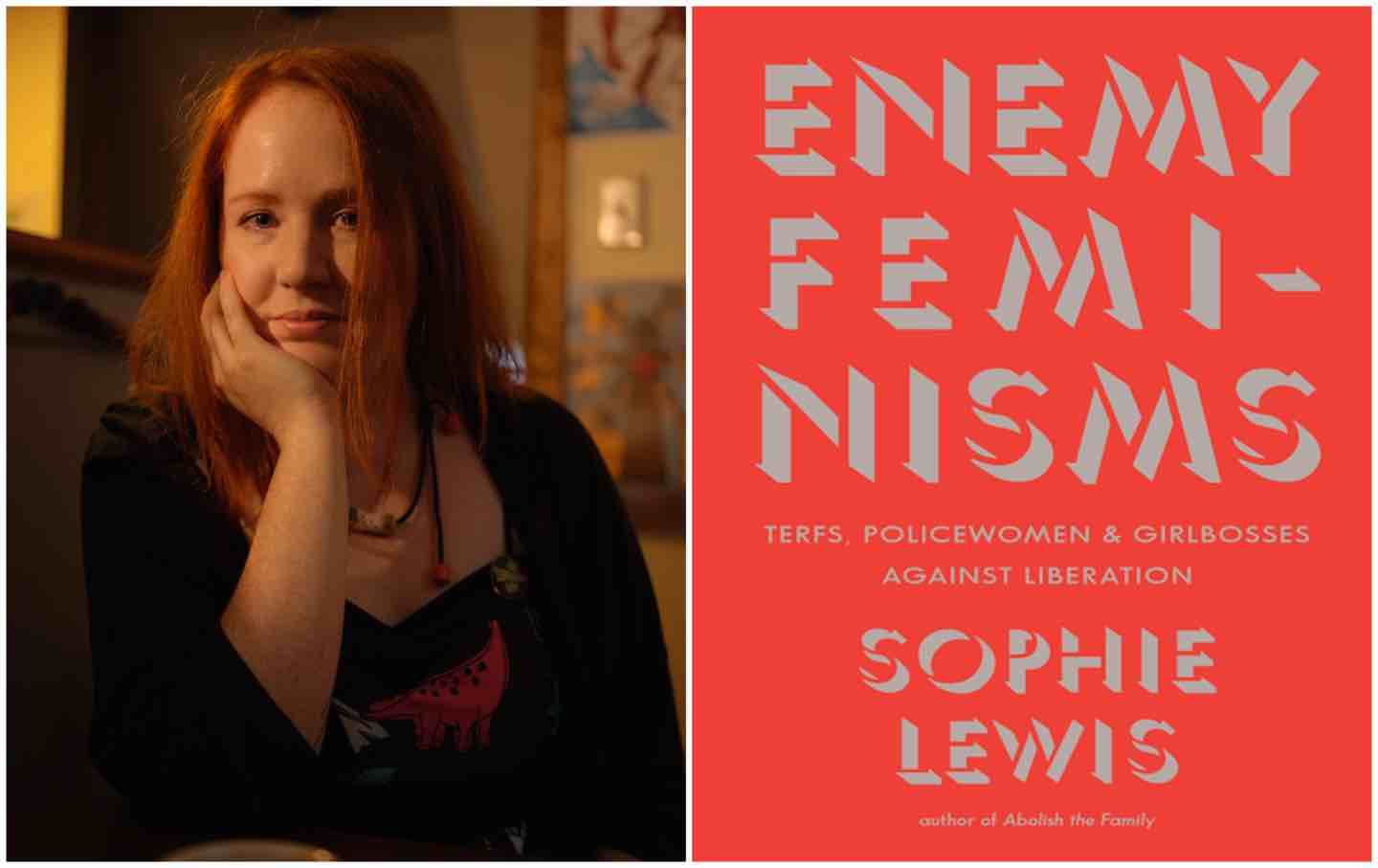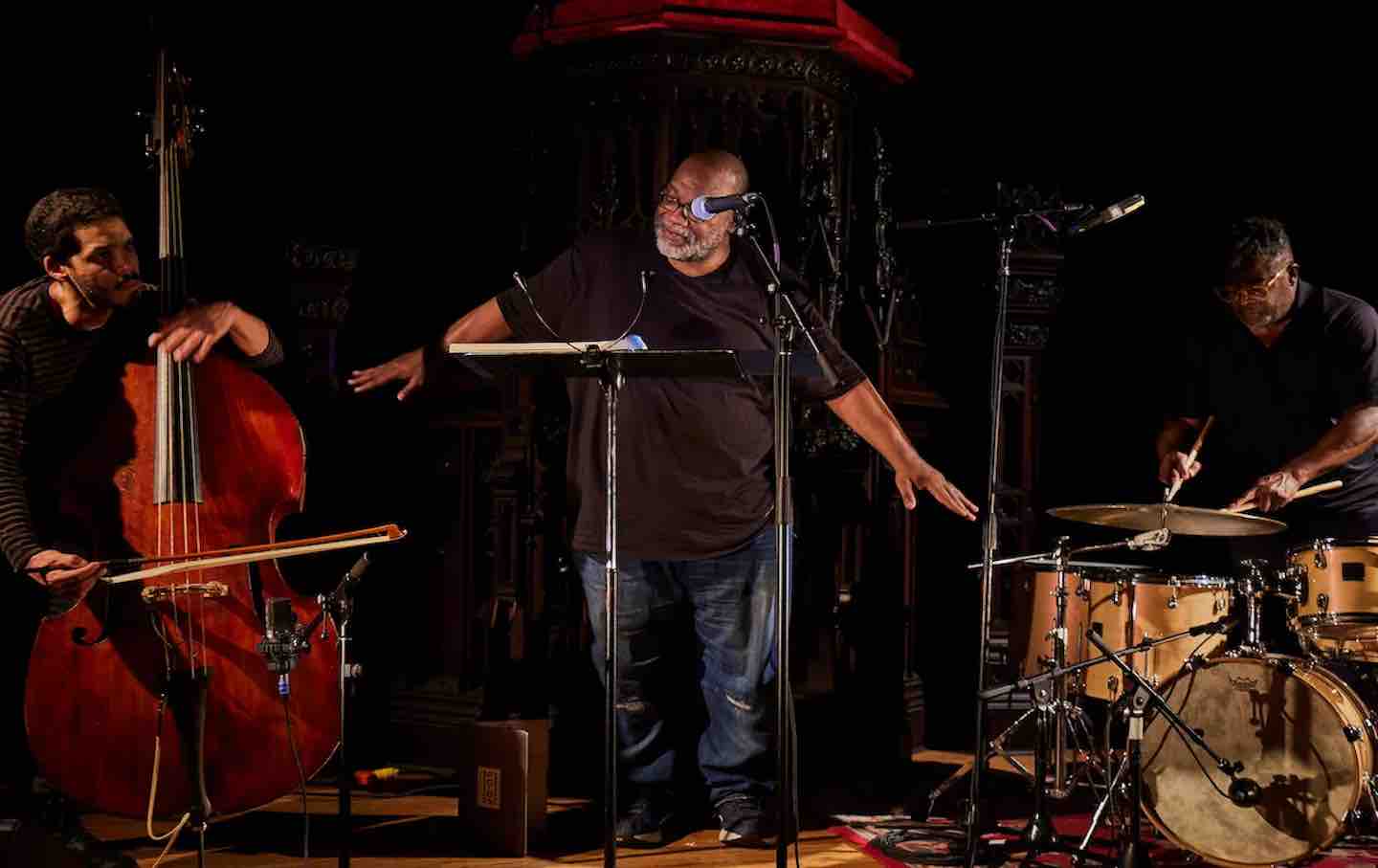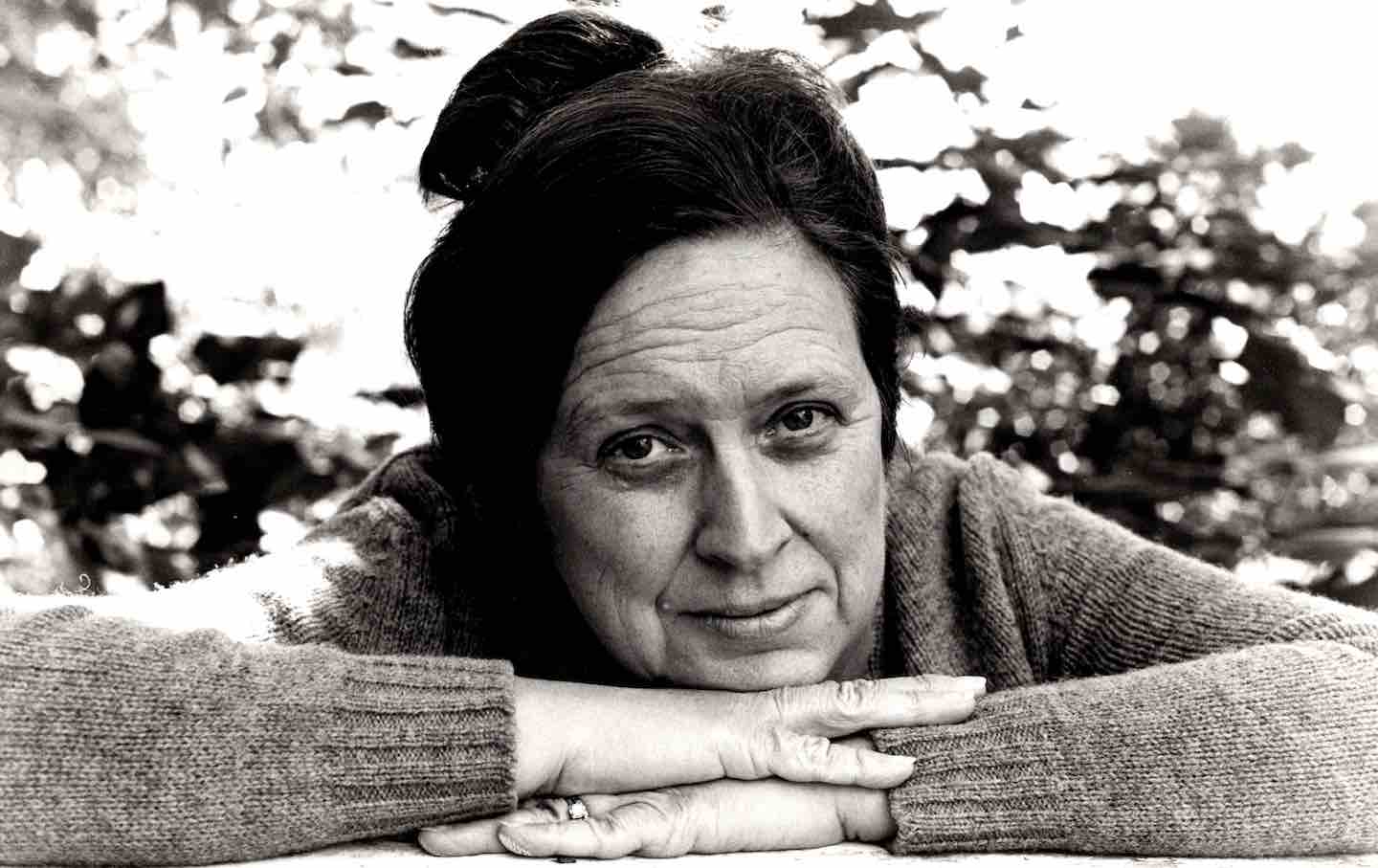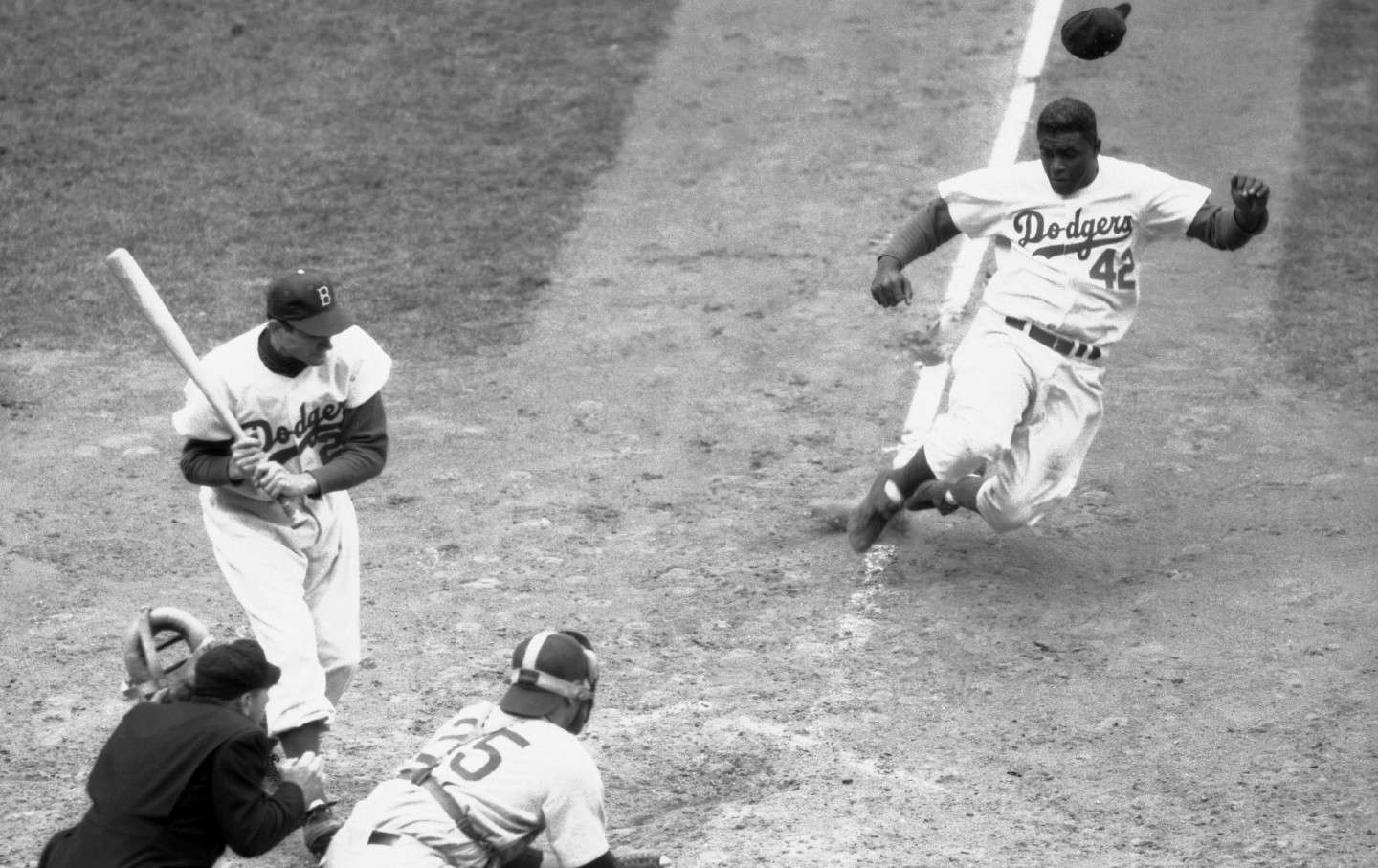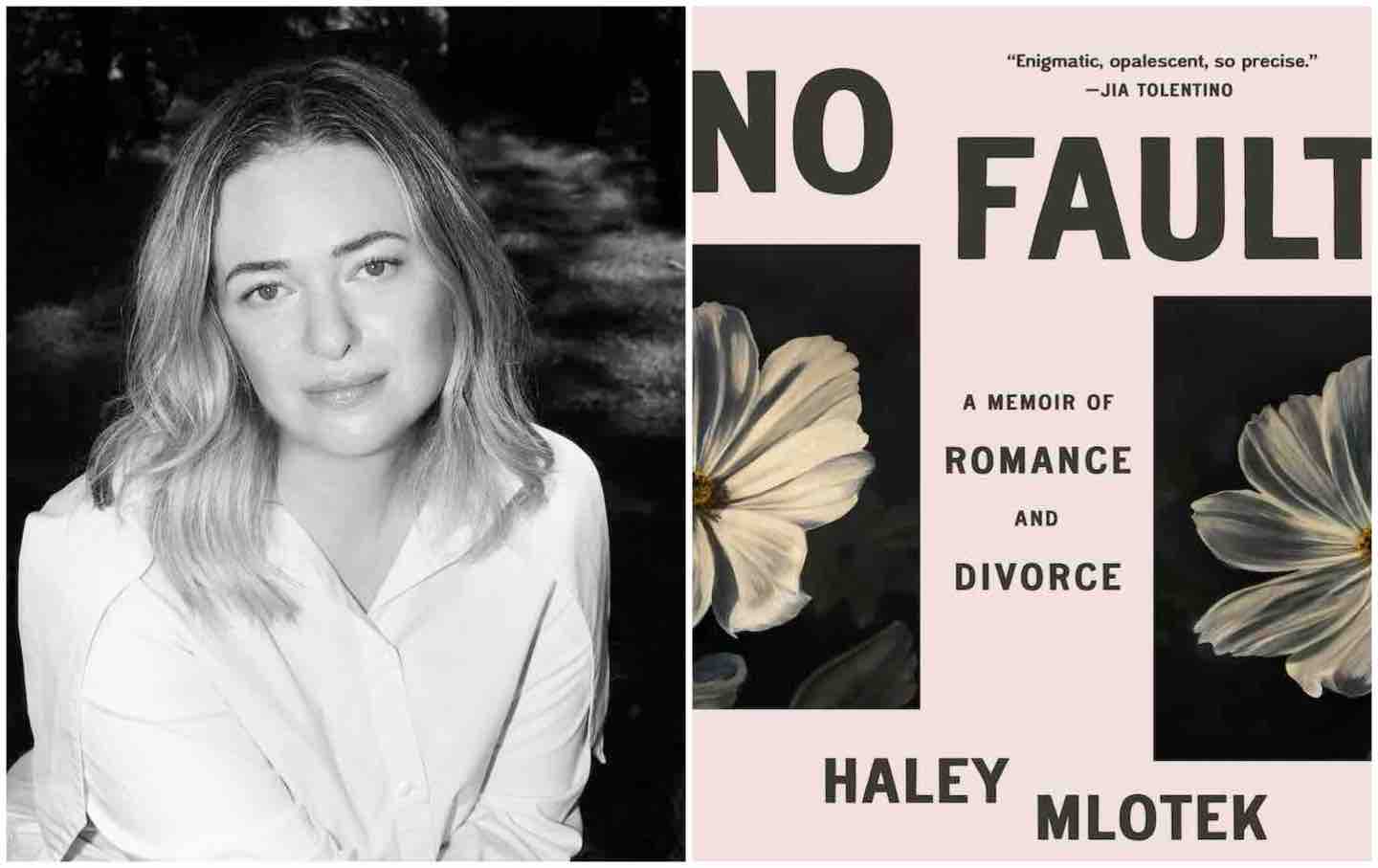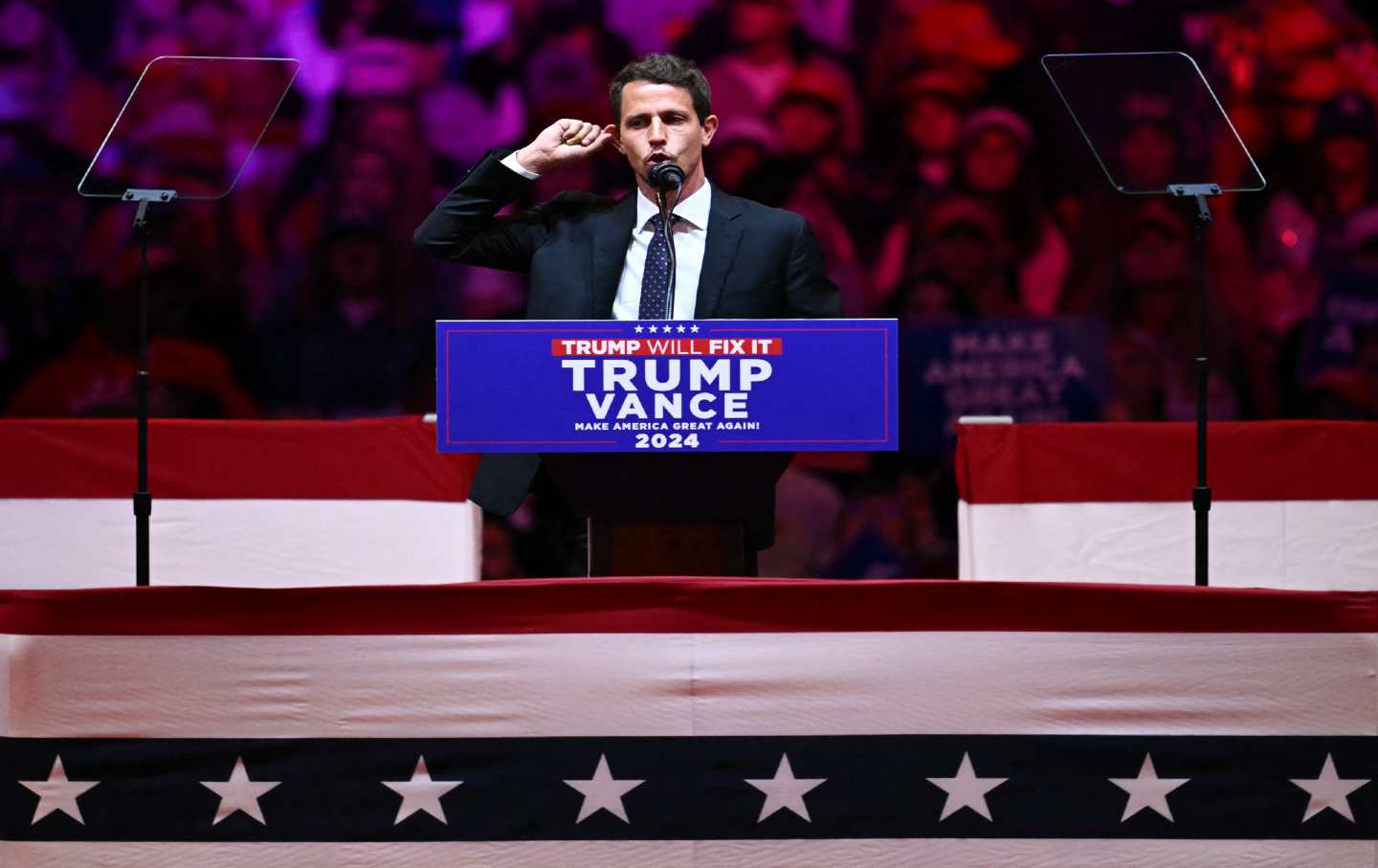Isaac Julien’s Truth
Dealing with time, race, and utopias, his work challenges conventional notions of where film belongs and should be consumed.
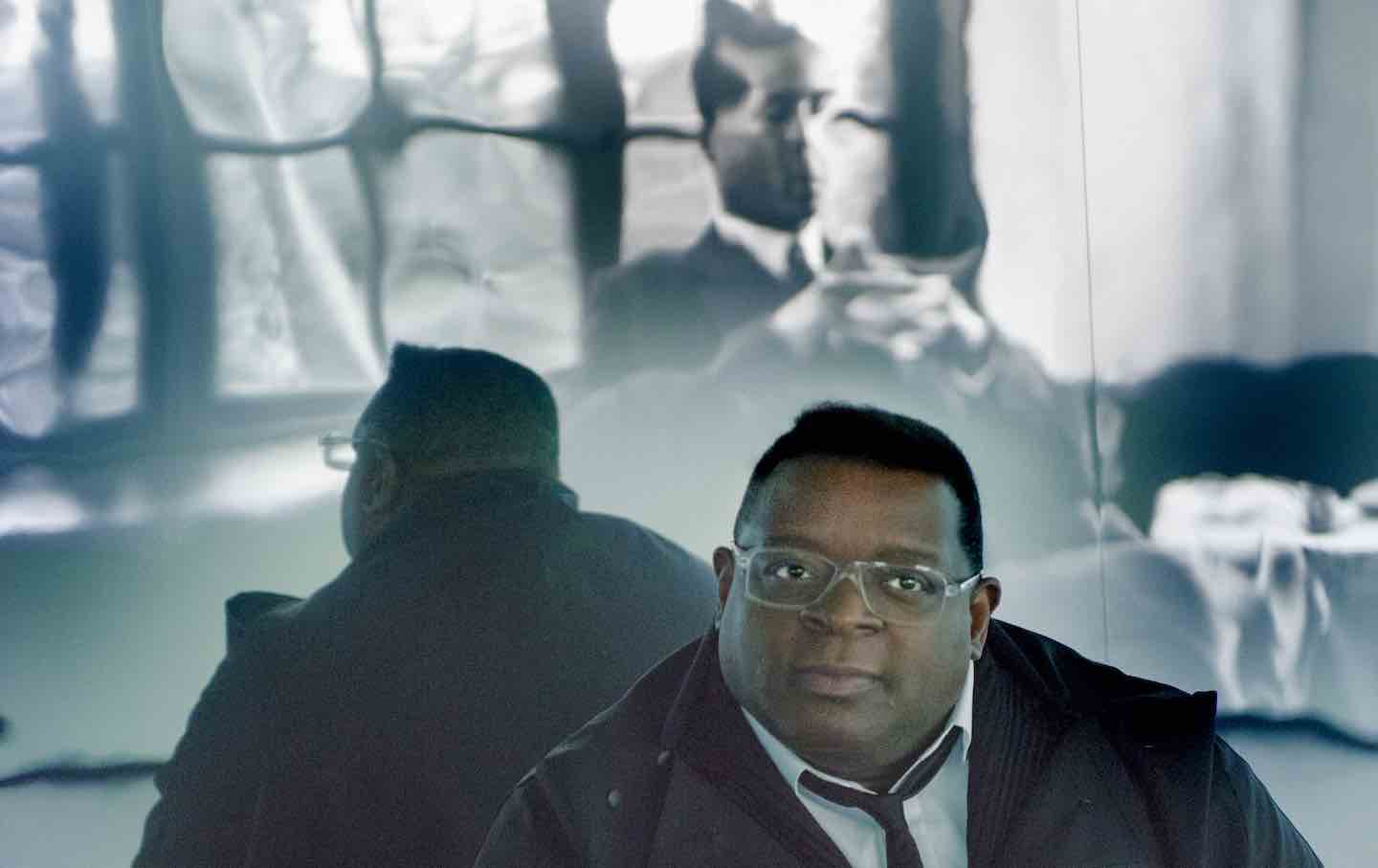
Isaac Julien at the Tate Britain, 2023.
(Photo by Judith Burrows via Getty Images)Robert Bresson once proclaimed that “the truth of cinematography cannot be the truth of the theater, not the truth of the novel, nor the truth of painting.” It is “impossible to express something strongly by the coupled resources of two arts. It is all the one or all the other.” Yet even Bresson wondered, “How [do you] hide…the fact that it all ends up on a rectangle of white fabric hung on a wall?” Like paintings, film—what Bresson liked to call “cinematography”—ultimately ends up on the wall; it lifts from a three-dimensional world and refashions it into a flat surface. The filmmaker ultimately submits his “film to the reality of the screen,” Bresson later noted, much “as a painter submits his picture to the reality of the canvas itself and of the color applied on it.”
Attending a recent retrospective of the work of Isaac Julien, the British installation artist and filmmaker, at Tate Britain (“Isaac Julien: What Freedom Is to Me”), I wondered about a slightly different but related question: In what way are films that make their way from the theater or television screen to the gallery or museum different from the paintings that hang nearby? Does this shift make for a different medium from those intended to be enjoyed in a theater or streamed at home? We certainly act as if that were the case, but can the art of filmmaking and the arts of painting and sculpture be so easily separated? Julien’s work, after all, is rooted not in the performance-based video art tradition of Vito Acconci or Joan Jonas, but in the cinema of Bresson or, say, Andrei Tarkovsky, and surveying his works brings such questions to the fore. For Julien, cinema becomes fluid and malleable, and the space of the museum a staging ground for a cinema that moves beyond a projection on a wall into a realm all its own.
I first encountered Julien as a filmmaker back in 1989, when his Looking for Langston was screened as part of the New York Film Festival. In retrospect, I should have realized then that Julien was uncomfortable with the conventions of the cinema—even the film’s length was unusual: 45 minutes, too long to count as a short, not long enough for a feature. Then there was the work’s style and content (terms that in Julien’s case become almost synonymous): Looking for Langston is set in a plotless world full of free-associative streams of sound and image (which contemplate “the beauty of people with freakish ways”)—and in an impossible and eerily sealed-off queer utopian vision of Langston Hughes’s Harlem milieu, blessedly free of the idea, so prevalent at the time, that homosexuality was “a sin against the race so it had to be kept a secret.”
Even then, it was clear that this was not a work designed for movie theaters. As for me, I was fascinated and puzzled. Despite my acquaintance with many strands of the cinematic avant-garde, Looking for Langston did not look like any film I’d seen before; its stylization was of a different order. I can’t say the film illuminated the life or art of its ostensible subject, Langston Hughes—who was rumored to be gay but whose sexual life remains unknown—though that didn’t seem to be the point. The cold beauty that Julien finds in what he depicts as Langston’s all-male social life seemed as idealized as it might be seductive. What’s shown may be entirely fantasy, but Julien’s mastery of light and shadow made the faces, figures, and spaces on which his camera dwelled somehow seem carved out of luminosity itself. If this is cinema, it’s nonetheless a form of cinema that’s more closely related to photography, painting, and above all to sculpture and architecture than to most other films.
Seeing Looking for Langston again, now installed in the context of a museum retrospective, my intuition that the film was not just a film has only deepened—my questions about the work were not resolved but displaced. For one thing, the gallery display liberates the work from the fixed start and end times of a ticketed theater: Viewers walk in and out whenever, which further undoes the linear narrative structure in a work where this was already rather hazy. Perhaps more important, the museum encourages a focus on the work’s pictorial and sculptural dimension—and this is where Julien excels. In Julien’s films, we see a visual artist as much as a director at work.
Julien returns to the 1920s in the most recent piece on view at the Tate Britain: the five-screen installation Once Again… (Statues Never Die). Again, the Harlem Renaissance is a centerpiece of the work and is evoked by way of one of its protagonists: philosopher Alain Locke, played by André Holland, whom we encounter in one part of the piece engaged in tense but friendly debate with the art collector Albert Barnes (Danny Huston). Here, we are far from the historical fantasia of Looking for Langston. The conversation between philosopher and art collector is firmly based on the historical record; their dialogue is based on the writings they published in the May 1924 issue of Opportunity: A Journal of Negro Life, an issue devoted to African art.
Locke and Barnes debate a subject that’s still controversial today, a century later: What is the place of traditional African art in the museum? Barnes had gone out of his way to cultivate an acquaintance with Locke, as he had already done with John Dewey and would later do with Bertrand Russell. Barnes and Locke didn’t exactly see eye to eye, and the quarrelsome collector would eventually fall out with Locke, as he did with almost everyone. (Russell’s relationship with Barnes ended in a lawsuit, which the philosopher won.) Both Barnes and Locke saw African art as providing a basis for what the latter thought of as “a new and more universal aesthetic.” Still, they viewed the art itself differently: Locke insisted that traditional African art be viewed through a historical lens and not be “taken up as an exotic fad and a fashionable amateurish interest”; Barnes, on the other hand, insisted that there was a new beauty that could be learned from all traditional arts, including those of Africa.
We pivot from this discussion to other questions about the ethics and purpose of museum art set in the Pitt Rivers Museum, an anthropological museum in Oxford. There we see a woman (Sharlene Whyte) wandering through its rooms offering an anti-colonial critique of museums in general, quoting from Aimé Césaire’s 1950 essay “Discourse on Colonialism”; its perspective reminds us by contrast that Barnes and Locke were equally immersed in a Western viewpoint.
We also encounter Locke on a studio visit with the sculptor Richmond Barthé (Devon Terrell). Like Locke, Barthé was gay, and Julien stages this scene with implicit eroticism. Also delicately inset within Julien’s piece are brief excerpts from You Hide Me, a 1970 film about the Benin bronzes by the Ghanaian filmmaker Nii Kwate Owoo, as well as clips from the renowned anti-colonial essay film by Chris Marker, Alain Resnais, and Ghislain Cloquet, Statues Also Die (1953), and selections from Looking for Langston, to which Once Again is, Julien has said, a kind of prequel. For him, it seems, the Harlem Renaissance, with its unchecked encounters—both intellectual and amorous, intra- and interracial—offers a sense of possibility that should still be pursued: an unsettled history.
Notable throughout Once Again… (Statues Never Die) is its formal rigor, its commitment to what Bresson called “the reality of the screen”: the sculpted flatness of its shots, again akin to sculpture. In Once Again, as in Langston, Julien’s figures appear as implacable volumes in deep space, molded from light as Barthé’s were from clay, and equally to be appreciated for their visual grandeur: Julien lends his protagonists something of the sense of permanence of classical statuary. This gives them a mythic dimension that transcends the realism of Once Again as it does the oneiric Langston.
That mythic dimension is recurrent in Julien’s work, perhaps most pointedly in his portrait of Frederick Douglass during the time he spent campaigning in Britain in the 1840s in the 10-screen installation Lessons of the Hour from 2019. Julien’s talent for the mythologization of the real shows itself in a slyly understated way in what seemed to me to be his most ravishing work so far, and the one that probably offers the clearest reflection on his own aesthetic project: his 2019 Lina Bo Bardi—A Marvellous Entanglement.
The protagonist of the three-screen work—which is also on view at the Yale Center for British Art in New Haven—is the eponymous architect, born in Rome in 1914, who after World War II emigrated to Brazil and became one of her adopted country’s leading cultural figures. There, she innovated a more democratic and popular form of architecture. Her commissions included the São Paulo Museum of Art, in which she sought to eliminate “all the cultural snobbery so dearly beloved by the intellectuals (and today’s architects), opting for direct, raw solutions.”
It’s been said that writing about music is like dancing about architecture. Well, Lina Bo Bardi—A Marvellous Entanglement incorporates a lot of dancing about architecture. Julien equates the beauty of Bo Bardi’s buildings with movement, with an infectious rhythm—movements and rhythms that Julien subtly elaborates upon through the syncopated relationship between the imagery on his three screens and the unexpected way that things sometimes repeat themselves from screen to screen. But Lina Bo Bardi is also a film about time, history, and memory—their malleability and their intractability. In it, we meet two Bo Bardis, young and old, played by Fernanda Torres and Fernanda Montenegro, respectively, and we hear them, in overlapping voices, ruminating on time and history. “Time is not linear,” the elder Bo Bardi explains in Portuguese, in a voice-over at the start of the piece (and more than once again near its end). “It’s a marvelous entanglement where, at any moment, points can be chosen and solutions invented without beginning or end.” And what better place to demonstrate the strange interweavings of time than a museum?
Such weighty discussions can be a lot for a film, and near the end, in a rather Godardesque sequence, Lina Bo Bardi pulls back to encompass its own making: We see Fernanda Montenegro rehearsing the film’s opening lines, as she is coached—one might almost say “conducted”—by a white-haired male interlocutor who asks her to say them over and over again, always differently. “Time is not linear,” Montenegro intones repeatedly. “It’s a marvelous entanglement where, at any moment, points can be chosen and solutions invented without beginning or end.”
As presented at Tate Britain, “What Freedom Is to Me” is one of the most ingeniously installed exhibitions I’ve seen in years, with seven works screened in six rooms, all of which could be accessed like spokes from the hub of a central access point rather than via a linear path through the show. It’s a set-up that mirrors the way the multiple screens of most of the individual works enable an undirected, wandering attentiveness that will be a little different for each viewer. Given that the show will later be installed at the Kunstsammlung Nordrhein-Wesfalen in Dusseldorf, Germany, and then travel to the Bonnefanten Museum in Maastricht, the Netherlands, I hope some comparably suitable solution will be found for unfolding the marvelous entanglement of Julien’s works. For in his art, architecture can dance, light carves sculptural volumes, and time itself proposes, in the artist’s own words, that “a culture of infinite possibility is ready to receive us.” At a moment when possibilities seem to be shutting down everywhere, such optimism becomes all the more necessary.
Support independent journalism that exposes oligarchs and profiteers
Donald Trump’s cruel and chaotic second term is just getting started. In his first month back in office, Trump and his lackey Elon Musk (or is it the other way around?) have proven that nothing is safe from sacrifice at the altar of unchecked power and riches.
Only robust independent journalism can cut through the noise and offer clear-eyed reporting and analysis based on principle and conscience. That’s what The Nation has done for 160 years and that’s what we’re doing now.
Our independent journalism doesn’t allow injustice to go unnoticed or unchallenged—nor will we abandon hope for a better world. Our writers, editors, and fact-checkers are working relentlessly to keep you informed and empowered when so much of the media fails to do so out of credulity, fear, or fealty.
The Nation has seen unprecedented times before. We draw strength and guidance from our history of principled progressive journalism in times of crisis, and we are committed to continuing this legacy today.
We’re aiming to raise $25,000 during our Spring Fundraising Campaign to ensure that we have the resources to expose the oligarchs and profiteers attempting to loot our republic. Stand for bold independent journalism and donate to support The Nation today.
Onward,
Katrina vanden Heuvel
Editorial Director and Publisher, The Nation

